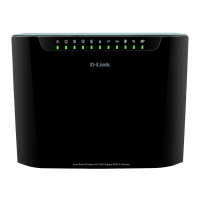Information you need from the Internet service
provider
Username
This is the Username used to log on to your ADSL service provider’s network. It is commonly in the form user@isp.com.au or user@isp.co.nz Your
ADSL service provider uses this to identify your account.
Password
This is the Password used, in conjunction with the Username above, to log on to your ADSL service provider’s network. This is used to verify the
identity of your account.
WAN Setting / WAN Media Type / Connection Type
These settings describe the method your Internet service provider uses to transport data between the Internet and your computer. Most users will
use the default settings. You may need to specify one of the following WAN Setting and Connection Type configurations (Connection Type settings
listed in parenthesis):
WAN Media Type (RJ-11 for DSL digital subscriber line or RJ-45 Ethernet for connecting your device to a VDSL bridge modem or a optical
network unit, also known as ONU)
PPPoE / PPPoA (PPPoE LLC, PPPoA LLC or PPPoA VC-Mux)
Bridge Mode (1483 Bridged IP LLC or 1483 Bridged IP VC Mux)
IPoA / MER (Static IP Address) (Bridged IP LLC, 1483 Bridged IP VC Mux, 1483 Routed IP LLC, 1483 Routed IP VC-Mux or IPoA)
MER (Dynamic IP Address) (1483 Bridged IP LLC or 1483 Bridged IP VC-Mux)
Modulation Type
ADSL uses various standardized modulation techniques to transmit data over the allotted signal frequencies. Some users may need to change the
type of modulation used for their service. The default DSL modulation (ADSL2+ Multi-Mode) used for the Router automatically detects all types of
ADSL, ADSL2, and ADSL2+ modulation. However, if you are instructed to specify the modulation type used for the Router, you may choose among
the numerous options available on the Modulation Type drop-down menu on the ADSL Configuration window (Advanced > ADSL)
Security Protocol
This is the method your ADSL service provider will use to verify your Username and Password when you log on to their network. Your Router
supports the PAP and CHAP protocols.

